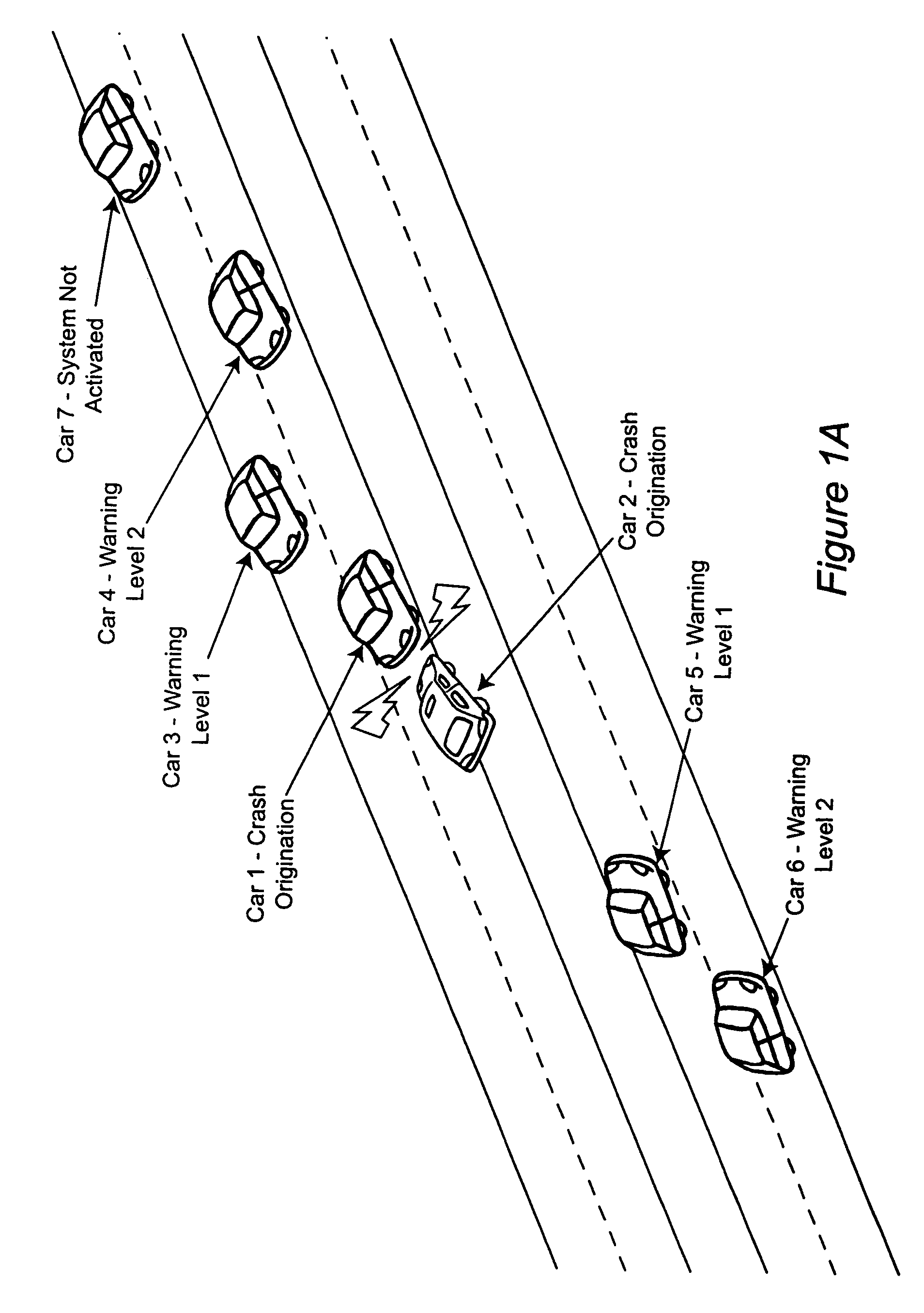Vehicle collision avoidance system enhancement using in-car air bag deployment system
a technology vehicle, which is applied in the direction of pedestrian/occupant safety arrangement, instruments, tractors, etc., can solve the problems of increasing the rate increasing the frequency and severity of vehicle collisions, and increasing the cost of collision avoidance system, etc., to achieve the effect of low cos
- Summary
- Abstract
- Description
- Claims
- Application Information
AI Technical Summary
Benefits of technology
Problems solved by technology
Method used
Image
Examples
Embodiment Construction
[0021]Referring now to the drawings, and more particularly to FIG. 1, there is shown a high level block diagram of the in-vehicle collision avoidance and warning system (IVCAWS) in accordance with the invention. As alluded to above, the effectiveness of any collision avoidance and warning system (CAWS) depends on communications between vehicles to provide early warning and / or to begin automatic vehicle control as early as possible. Communication between vehicles, in turn, depends on similarly equipping most, if not all, vehicles with CAWS systems which operate similarly and are compatible with each other. To achieve this latter condition, the invention exploits the capabilities of processors used to deploy air bags Which are already present in most vehicles. Therefore, the cost of providing the invention in a vehicle, as original equipment or by retrofitting, is very much reduced and may be limited to essentially the cost of radio transmitters and receivers and the provision of suff...
PUM
 Login to View More
Login to View More Abstract
Description
Claims
Application Information
 Login to View More
Login to View More - R&D
- Intellectual Property
- Life Sciences
- Materials
- Tech Scout
- Unparalleled Data Quality
- Higher Quality Content
- 60% Fewer Hallucinations
Browse by: Latest US Patents, China's latest patents, Technical Efficacy Thesaurus, Application Domain, Technology Topic, Popular Technical Reports.
© 2025 PatSnap. All rights reserved.Legal|Privacy policy|Modern Slavery Act Transparency Statement|Sitemap|About US| Contact US: help@patsnap.com



